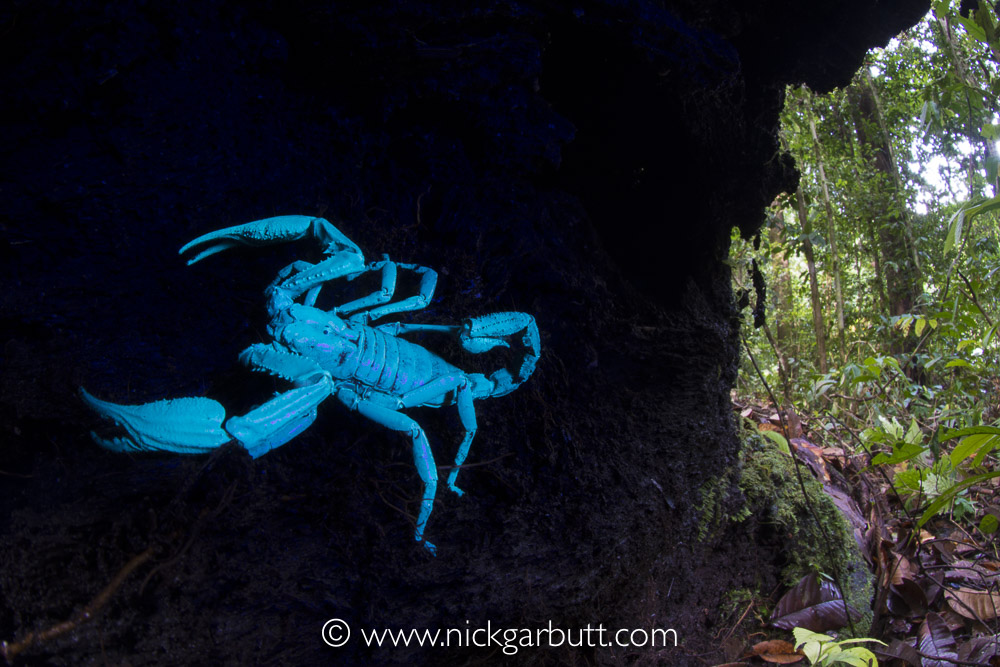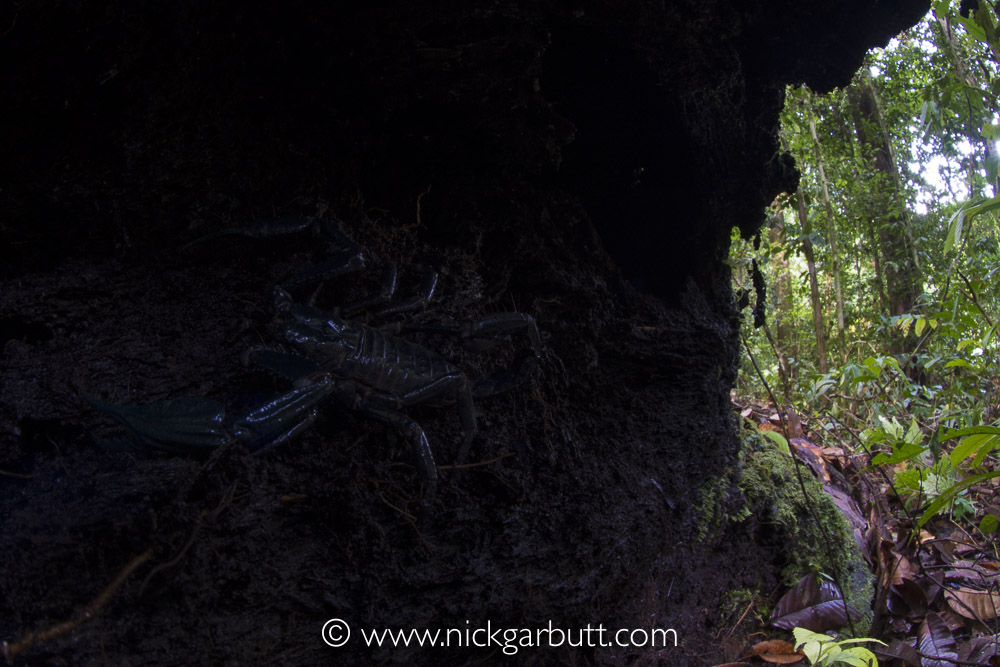Story Behind the Picture: Scorpion – Let There Be UV Light
Nikon D850, Nikon 8-15mm fisheye @15mm, f16, 6 seconds
It has long been known that scorpions (all species) fluoresce under ultraviolet (UV) light, yet the reasons for this remain a mystery. Not only do we not really know why, we also do not know how as the chemicals that actually cause the phenomenon have also evaded detection. We do know these chemicals are contained within the hard outer shell (exoskeleton) of the scorpion but that’s about it.
There have been numerous suggestions and theories put forward to explain why scorpions have evolved this trait. One of the more recent theories postulates that the entire outer surface (cuticle) of the scorpion acts as a light sensor (remember scorpions are strictly nocturnal) and is able to relay information to the animals nervous system such that it can better ‘see’ its immediate surrounds and environment. And somehow the chemicals that cause the UV glow are involved the broader detection of all wavelengths of light.

Above: the Borneo giant forest scorpion (about 15cm long) illuminated with UV light. Below: the same shot with only natural light. Look very carefully and you can just make out the outline and form of the scorpion in the photo below.

The phenomenon has also been used to the disadvantage of scorpions as it makes them easy to detect and be eradicated from areas close to human habitation - UV torches are often marketed for ‘pest control’.
But what might be a good way to illustrate this remarkable aspect of scorpion biology in the wild? How best to take a photograph?
I have spent a lot of time in tropical rainforests (they are my favourite and preferred habitat), so I’ve encountered a fair few scorpions in my time. I often go out specifically looking for them (and other similarly intriguing ‘creepy crawlies’) and I’ve been on the wrong end of a scorpion sting a couple of times too (ones that had crawled under the ground sheet of my tent). So I’ve had plenty of time and opportunity to ponder a worthwhile approach.
Simply taking a shot at night (which I’ve done) is not overly interesting as the result is simply a blue-green glowing scorpion surrounded by inky blackness. I wanted to illustrate the scorpion within its habitat and if possible the ‘with’ and ‘without’ UV light comparison.
This photo shows a large Borneo giant forest scorpion (Heterometrus longimanus) (in Danum Valley, Sabah) inside the hollow log it was resting in during the day. The use of an extreme wideangle fisheye lens allowed me to incorporate the whole scorpion, the log interior and the forest beyond in a single composition. To achieve this, I had to manoeuvre the lens as close as possible to the subject, so the scorpion would look a significant size in the image. In this instance the front lens element was around 10cm away from the scorpion (which was about the size of a large crayfish). And don't worry this species is pretty harmless and placid, a sting is no worse than that of a bee or wasp. A small aperture was selected to give a substantial depth of field that would ‘capture’ the entire scorpion and the forest behind. Given how gloomy the whole scene was this naturally resulted in a very slow shutter speed, in this case six seconds, so camera and lens were held rock steady on a tripod (challenging to set up inside a hollow log).
Illuminating the scorpion required ‘painting’ it with UV light using a torch during the duration of the exposure. ‘Painting’ in this instance meant moving the torch around and illuminating the scorpion from different angles so it was evenly lit in the final shot and there were no UV ‘shadows’. For the comparison ‘without’ UV light shot I simply repeated the exposure, without using the UV torch. I think the result is pretty damn cool and it will continue to ‘tickle’ me whenever I find wild scorpions in rainforests using a UV torch.
